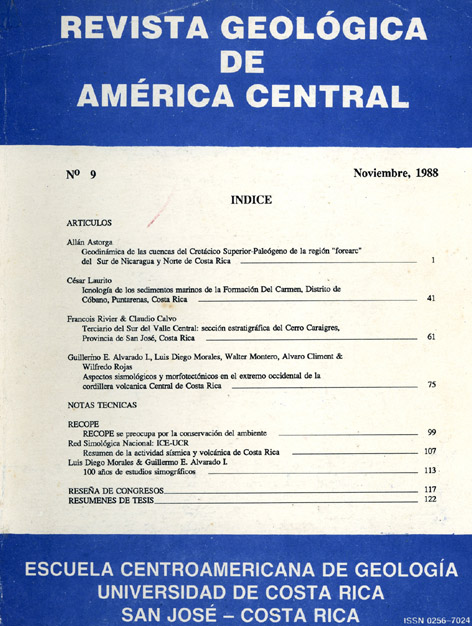Abstract
The deeper refilling of Upper Cretaceous-Paleogene forearc basins system in Southern Nicaragua and Northern Costa Rica is divided into five depositional systems. These depositional systems reflects the development of deep water (pelagic and turbiditic) sedimentation due to the initiation and evolution of subdition at the Convergent Middle America Margin. This development can be summarized as follows:
1. Prodominance of pelagic and hemipelagic sedimentation during the Cretaceous and Lower Maastrichtian.
2. Local depositation of coarse turbiditic sediments particulary in Santonian-Campanian, associated to the development of an oceanic relief during the Cretaceous.
3. General estableshiment of turbiditic sedimentation since Maastrichtiana.
4. Forearc breaking during Paleocene formed two long and parale basins due to the uplifting of an outer non-volcanic arc.
5. The sedimentary pattern changed radically in association with the rising.
6. The deep water sedimentation continued up to the Upper Eocene and possibily to the Lower Oligocene. Based upon sequencial analyses changes on the sedimental composition and lateral tendencies of facies, five different controlling factors for the deep water sedimentation can be stated: a. Eustatic changes, b. tectonic uplifitings, c. subsidence, d. volcanism and e. effects of ephemeral barriers.






